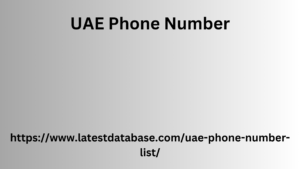Post by account_disabled on Mar 10, 2024 9:24:48 GMT
The biggest change in PSD2: Strong Customer Authentication , or SCA, or the strong user authentication process. will no longer be sufficient from a security point of view. For every expense over €30 the user will be asked for a second type of identification. Merchants must apply it when they have an electronic payment transaction . With strong user authentication, you have an additional security system useful for uniquely identifying the customer. In fact, similarly to double identification.
SCA is based on at least two factors from the following UAE Phone Number categories: Knowledge: i.e. something that only the user knows, such as a password, a pin or the answer to a particular question. Possession: i.e. something that only the user possesses, for example a mobile number, an email address, a wearable device or a token (in this case it is a virtual token usually present within the mobile banking app of the Bank or in a specific app). Inherence: i.e. something that the user is, such as personal biometric parameters for example fingerprints, voice print or facial recognition.

These authentication factors must be independent of each other. This means, for example, that a physical object (such as a smartphone) must be combined with a password or fingerprint. That is to say, PSD2 works like this: In order to successfully place an online order, a user must have two of the three factors. According to the Directive, merchants are prohibited from applying any surcharge for customers' use of a particular payment method. In addition to making online payments safer for users, the broad aim of PSD2 is to harmonize different payment methods within the country and the EU .
SCA is based on at least two factors from the following UAE Phone Number categories: Knowledge: i.e. something that only the user knows, such as a password, a pin or the answer to a particular question. Possession: i.e. something that only the user possesses, for example a mobile number, an email address, a wearable device or a token (in this case it is a virtual token usually present within the mobile banking app of the Bank or in a specific app). Inherence: i.e. something that the user is, such as personal biometric parameters for example fingerprints, voice print or facial recognition.

These authentication factors must be independent of each other. This means, for example, that a physical object (such as a smartphone) must be combined with a password or fingerprint. That is to say, PSD2 works like this: In order to successfully place an online order, a user must have two of the three factors. According to the Directive, merchants are prohibited from applying any surcharge for customers' use of a particular payment method. In addition to making online payments safer for users, the broad aim of PSD2 is to harmonize different payment methods within the country and the EU .
